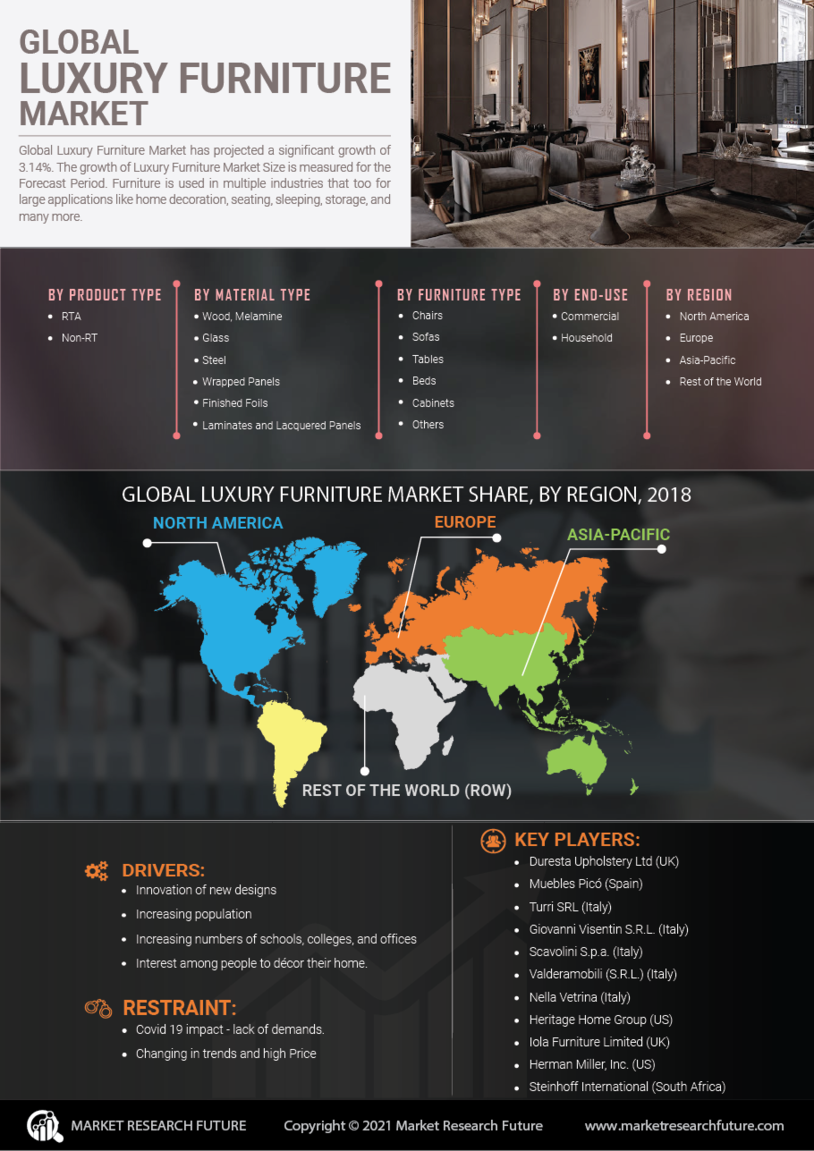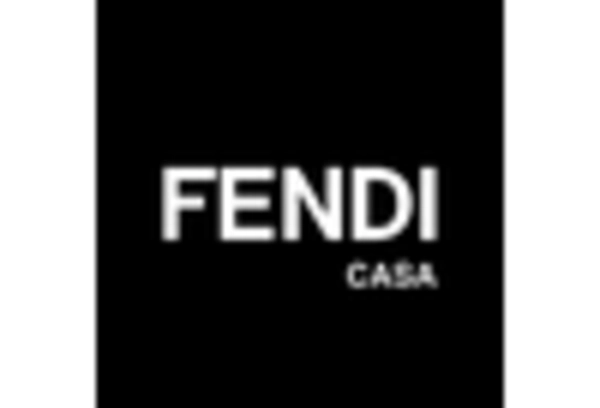Rising Disposable Income
The Luxury Furniture Market appears to be positively influenced by the increasing disposable income among consumers. As individuals experience growth in their earnings, they tend to allocate a portion of their income towards luxury goods, including high-end furniture. This trend is particularly evident in emerging economies, where a burgeoning middle class is eager to invest in premium home furnishings. According to recent data, the luxury furniture segment has seen a compound annual growth rate of approximately 5% over the past few years, indicating a robust demand driven by affluent consumers. The willingness to spend on luxury items suggests a shift in consumer behavior, where quality and exclusivity are prioritized over mere functionality. This driver is likely to continue shaping the Luxury Furniture Market as more consumers seek to enhance their living spaces with opulent furnishings.
Urbanization and Lifestyle Changes
Urbanization is a significant driver of the Luxury Furniture Market, as more individuals migrate to urban centers in search of better opportunities. This demographic shift often leads to a demand for stylish and functional furniture that complements modern living spaces. As urban dwellers tend to favor smaller, well-designed homes, the need for luxury furniture that maximizes space while providing aesthetic appeal becomes paramount. Furthermore, lifestyle changes, such as the rise of remote work, have prompted consumers to invest in high-quality home office furniture. The Luxury Furniture Market is likely to benefit from these evolving preferences, as consumers increasingly seek to create comfortable and sophisticated environments that reflect their personal style. The trend of urbanization, coupled with changing lifestyles, suggests a sustained growth trajectory for luxury furniture sales.
Customization and Personalization Demand
The Luxury Furniture Market is increasingly characterized by a demand for customization and personalization. Consumers are seeking unique pieces that reflect their individual tastes and preferences, leading to a rise in bespoke furniture offerings. This trend is particularly pronounced among affluent buyers who desire exclusive designs that set their homes apart. Data indicates that the customization segment within the luxury market is growing, as brands respond to consumer desires for tailored solutions. The ability to personalize furniture not only enhances customer satisfaction but also fosters a deeper emotional connection between consumers and brands. As the Luxury Furniture Market continues to evolve, the emphasis on customization is likely to drive innovation and creativity among manufacturers, ultimately enriching the consumer experience.
Sustainability Trends in Luxury Furniture
Sustainability is emerging as a crucial driver within the Luxury Furniture Market, as consumers become more environmentally conscious. The demand for eco-friendly materials and sustainable production practices is reshaping the landscape of luxury furniture. Brands that prioritize sustainability are likely to attract a growing segment of consumers who value ethical consumption. Recent studies suggest that a significant percentage of luxury consumers are willing to pay a premium for sustainable products, indicating a shift in purchasing behavior. This trend is prompting manufacturers to innovate and adopt sustainable practices, such as using reclaimed wood and non-toxic finishes. As sustainability becomes a key consideration for consumers, the Luxury Furniture Market is expected to evolve, with brands that align with these values likely to gain a competitive edge.
Influence of Social Media and Online Platforms
The Luxury Furniture Market is experiencing a transformation due to the influence of social media and online platforms. Consumers are increasingly turning to digital channels for inspiration and purchasing decisions, with platforms like Instagram and Pinterest showcasing luxurious interior designs. This trend has led to a heightened awareness of luxury brands and their offerings, driving demand for high-end furniture. Data indicates that online sales in the luxury segment have surged, with e-commerce accounting for a significant portion of total sales. As consumers become more engaged with brands through social media, the Luxury Furniture Market is likely to see an increase in brand loyalty and customer engagement. This digital shift not only enhances visibility for luxury furniture brands but also facilitates a more personalized shopping experience, further propelling market growth.


















Leave a Comment